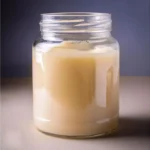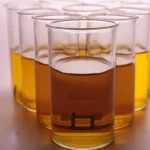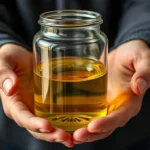Product categories
Blog Posts

Slack Wax Uses
Recent reviews
-
 Bitumen PG
Rated 5 out of 5by Work & Energy
Bitumen PG
Rated 5 out of 5by Work & Energy -
 Bitumen VG
Rated 5 out of 5by Work & Energy
Bitumen VG
Rated 5 out of 5by Work & Energy -
 White Spirit
Rated 5 out of 5by Work & Energy
White Spirit
Rated 5 out of 5by Work & Energy -
 Residue Wax 2
Rated 5 out of 5by Work & Energy
Residue Wax 2
Rated 5 out of 5by Work & Energy -
 Light Rubber Process Oil (RPO)
Rated 5 out of 5by Work & Energy
Light Rubber Process Oil (RPO)
Rated 5 out of 5by Work & Energy

A solid or semi-solid product of dispersion of a thickening agent in lubricating oil is called grease. In other words, grease is oil mixed with a thickener and other additives. grease capability and compatibility are directly affected by thickeners. They also impact grease consistency, which is measured in NLGI (National Lubricating Grease Institute) Grades. The NLGI grade is an item that shows consistency of greases. The higher the grade is resulted by the thicker grease. Grease usually consists of inedible lard, the rendered fat of waste animal parts, or a petroleum-derived or synthetic oil containing a thickening agent such as standard soaps or may be a mixture of synthetic thickeners, or bases, in petroleum oils. Greases are applied to mechanisms that can be lubricated only infrequently and where a lubricating oil would not stay in position. To be more precise, the general function of grease is to prevent metal-on-metal contact and protect your equipment from wear which can be act as sealants. because of their high viscosity grease-lubricated bearings have greater frictional characteristics.
There are many differences between oil and grease. At room temperature, greases usually stay solid, while oils are usually liquid. All oils can be turned into greases, but not all greases come from oils. Greases are typically only used on machinery, tools, or equipment, while oils have a multitude of other, non-industrial uses. In addition, grease systems tend to be simpler than oil systems and are less expensive. Greases are better to control leakage and provide better seals against contaminants. However, oil is more suitable option to drain, and control the amount you are using and much cleaner than grease. There are a variety of grease grades including silicone, fluoroether-based, laboratory, food-grade, water-soluble, and cork grades. Grease is distributed in new steel drum packaging.



